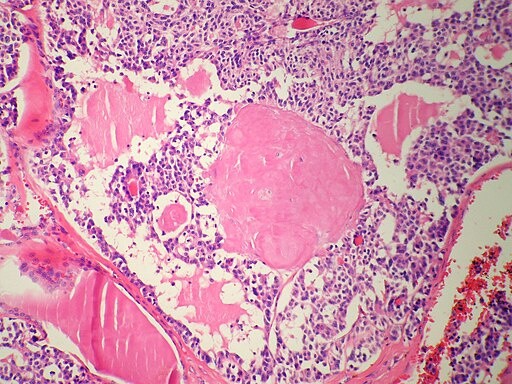Many soluble proteins convert to insoluble amyloid fibrils with a cross-beta structure. The formation of these fibrils is linked to the development of serious diseases known as amyloidoses. Some famous examples of such diseases are mad cow disease, type 2 diabetes, and Alzheimer's disease.

Despite the growing understanding of the importance of amyloidogenesis-induced co-aggregation, there is currently no method for predicting amyloid co-aggregation.
What are Amyloids?
Amyloids refer to aggregates of proteins found in organs and tissues. It consists of unbranched microscopic fibrils that appear accessible to many, if not all, polypeptide chains.
When this protein builds up in organs, it can lead to a rare disease called amyloidosis. This medical condition is characterized by the failure of organs like the heart, liver, kidney, spleen, digestive tract, and nervous system to work correctly.
The presence of amyloids is not always pathological since many have functional, beneficial roles in cells. What triggers aggregation into amyloid fibrils is changes in protein structure. In the last few years, a considerable amount of data has been accumulated regarding the co-aggregation of various amyloid-forming proteins.
Read also: Amyloidosis Explained: What Is This Condition That Caused the Death of Hockey Player Gino Odjick?
Novel Bioinformatic Tool
Geneticists and biotechnologists from St. Petersburg University and the University of Montpellier have developed AmyloComp, a bioinformatics approach for identifying pairs of proteins capable of aggregation. The details of their study are discussed in the paper "AmyloComp: A Bioinformatic Tool for Prediction of Amyloid Co-aggregation."
The team was the first in the world to introduce software that enables the prediction of pairs of proteins in amyloid fibrils capable of co-aggregation. This software is written in Python and is available as an online application.
Amyloids form a 'stack' of several molecules across the fiber. Traditionally, amyloid fibrils are made of multiple copies of the same protein. In this case, they are homogeneous and have the same structure. Yet, scientists are trying to find the co-aggregation of different proteins in a common fibril.
The 'amyloid cascade' hypothesis was proposed a pretty long time ago. This theory assumes that pathological amyloid aggregates can trigger the aggregation of other proteins. On the other hand, some vital biological processes need co-aggregation of various amyloid-forming proteins.
Some known examples of the co-aggregation are human proteins RIPK1 and RIPK3. This co-aggregation is part of the signaling cascade when triggering the antiviral response. The AmyloComp software is capable of identifying similar examples on the proteome scale.
According to study co-author Stanislav Bondarev, the AmyloComp software demonstrates an accuracy of more than 94% on a model data set. It also reliably classifies known positive and negative examples of protein co-aggregation.
The bioinformatics tool made by the University scientists is unique. While other bioinformatic approaches do not model co-aggregation of two amyloid proteins, the strategy developed by the St. Petersburg University researchers is based on comparing the amino acid sequence of two proteins. It also considers the possibility of stacking various proteins within the same amyloid fibril. Such an approach makes identifying sequences that form a single structure possible.
Check out more news and information on Amyloid in Science Times.
© 2025 ScienceTimes.com All rights reserved. Do not reproduce without permission. The window to the world of Science Times.










